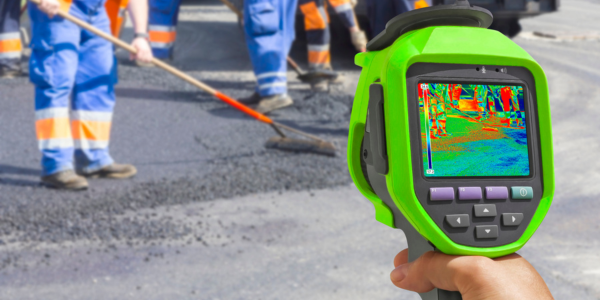Roof maintenance is a marathon, not a sprint

By Dani Sheehan.
Learn how infrared technology can detect early leaks and prevent full roof replacement when performed by trained technicians regularly.
If you want to run a marathon, chances are you aren’t going to sign up and run one tomorrow. You’re going to train over several months, caring for your body, building strength and cardio to ensure you don’t hurt yourself and eat appropriately to give yourself enough energy for the endurance required in the more than four hours you’ll be running. So why don’t we care and feed our roofing systems in the same way? In a recent interview, we met with Mark Powell, international trainer for roofing diagnostics at Weatherproofing Technologies Incorporated (WTI), a subsidiary of Tremco. Throughout our discussion, he made it clear that regular maintenance and the use of proper technology on a building’s roof can be a sustainable way for a roof to hold up for marathon lengths, rather than falling apart after a few quick sprints.
Using infrared technology for roofing started to become popular in the 1970s. Today, it provides a non-destructive and efficient method for detecting water leaks on commercial roofs, allowing for proactive maintenance and repair to prevent further damage to the building structure. Infrared imaging relies on the principle that different materials absorb and retain heat differently. When sunlight hits a roof, it heats up the materials on the surface. However, areas where there is moisture tend to retain heat differently than dry areas. The temperature differential is what these cameras detect. If a discrepancy is found on a roof, additional testing can be done to confirm there is a leak on the roof, and it can be repaired before causing further damage or requiring a much more expensive solution like replacing the entire roof.
As Mark explains, “The reason you do diagnostics is to get answers. And the quality of information is based on the research done.” This is where secondary verification becomes important to the effectiveness of infrared technology in roofing diagnostics. If you can run a mile in under six minutes, you aren’t going to assume you can run 26.2 miles and maintain the same pace. Similarly, an infrared inspection highlights areas of concern, but it’s important to take a core cut into the roof to confirm and further evaluate the damage before assuming the solution. These core cuts are also critical because they force a person to physically inspect a roof. This may seem obvious, but without a proper history of the building, you may now know the exact roofing system and so the infrared inspection might not be entirely accurate.
Roofing diagnostics in a nutshell is the preventive maintenance that tells you a roof is strong and healthy enough for a marathon. Mark suggests, “You can come up with a yearly [schedule] or every two years for scans and the cost of that scan if you’re doing it in that frequency is minute in relationship to how much it’s going to cost to repair an entire roof system.” The sooner you can detect a leak, the better off you are.
Learn more about Tremco WTI in their Coffee Shop Directory or visit www.tremcoroofing.com/wti-and-services/wti-general-contracting/.
About Dani
Dani is a writer for The Coffee Shops and AskARoofer™. When she's not writing or researching, she's teaching yoga classes or exploring new hiking trails.






















Comments
Leave a Reply
Have an account? Login to leave a comment!
Sign In